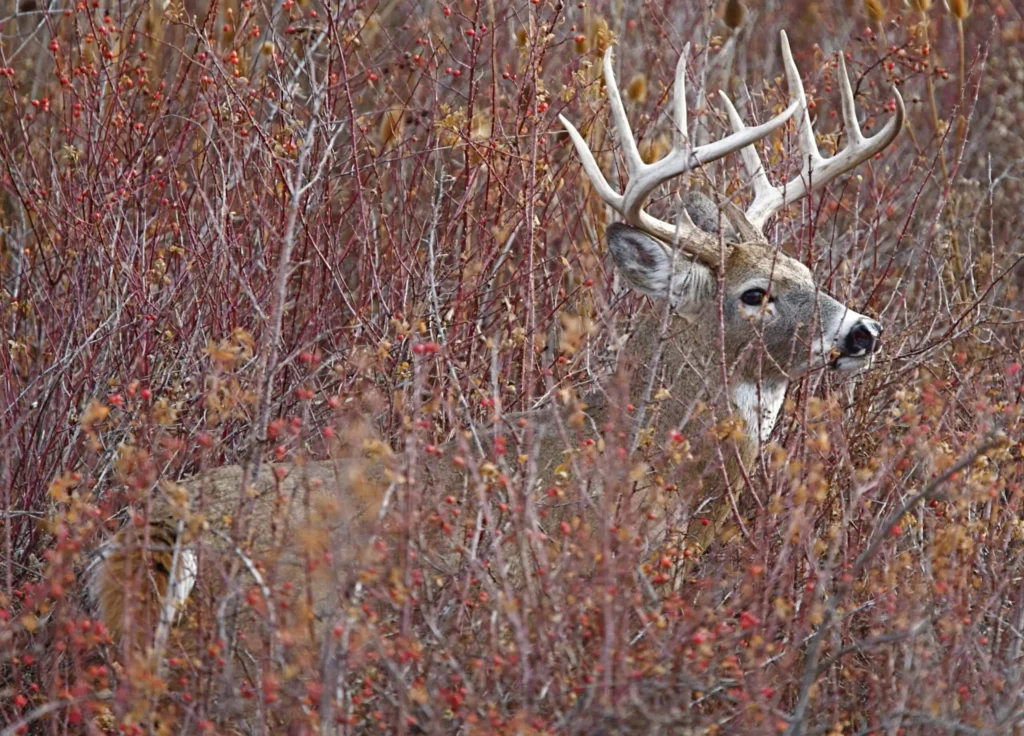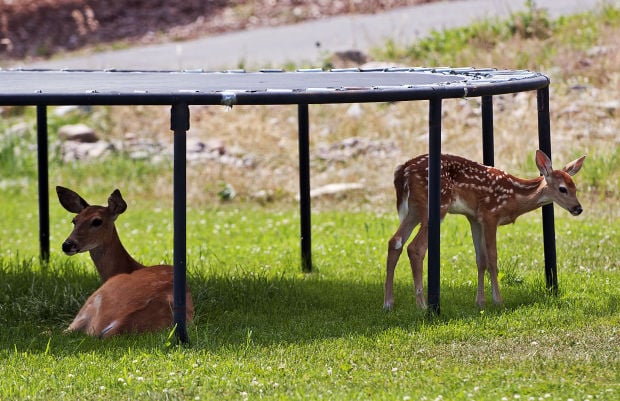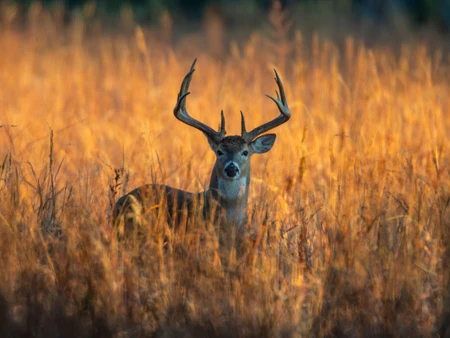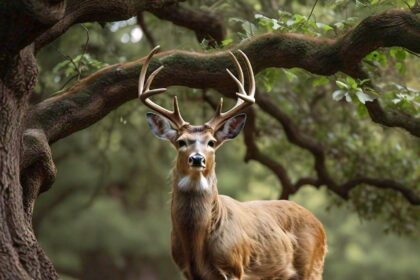To attract whitetail deer without bait equals using natural methods. This not only keeps you in line with regulations in many areas but also enhances the overall hunting experience by fostering a deeper connection between you and the environment.
Here’s your ultimate guide to attracting whitetail deer without bait.
Understanding Whitetail Deer Behavior
Whitetail deer are creatures of habit, often following the same trails and feeding patterns. They are also highly sensitive to their environment, relying on their keen senses of smell, sight, and hearing to stay safe.
Seasonal Patterns
- Spring and Summer: Whitetail deer focus on feeding to build up their energy reserves. They are often found in areas with abundant vegetation.
- Fall: This is the breeding season (rut), and bucks become more active and less cautious as they search for does.
- Winter: Deer seek out areas with good cover and food sources to survive the colder months.
How To Attract Whitetail Deer Without Bait

Natural Food Sources
One of the best ways to attract whitetail deer without bait is to provide natural food sources. This can be achieved by enhancing the habitat around your hunting area.
To do this, you can plant native or deer attracting vegetation such as Plant apple, persimmon, or oak trees. These produce acorns, a favorite food of deer. You may also plant shrubs like blackberry, raspberry which provide excellent forage.
Consider building food plots using plants like clover or alfalfa, which are highly attractive to deer. These can be planted in small clearings within the forest.
Maintenance Of Habitat
This can be done through several ways, which include:
- Timber Management: Thinning out certain areas can promote the growth of new vegetation, providing more food and cover for deer.
- Create Edges: Deer love edge habitats where forest meets field. Creating these transitions can make your land more attractive to them.
Cover and Shelter

Deer need cover for bedding and protection from predators. Providing ample cover will make them feel safe and increase their likelihood of staying in your area, giving you easy access to them.
Consider making bedding in areas with thick underbrush, fallen trees, and dense shrubs. In colder climates, evergreen trees provide essential thermal cover during winter.
If these natural areas do not exist, you can create brush piles from fallen trees and branches. These can serve as alternate cover. You can also use the hinge cutting technique in creating low cover and promoting new growth.
Scent And Sound
Using scent and sound to your advantage can help lure deer into your hunting area without the use of bait.
You can use natural cover scents, such as earth or pine, to mask your human scent so deer do not smell you and run away.
When it comes to sound, learn to use deer calls effectively. Grunts, bleats, and rattling antlers can simulate the sounds of deer, all these can attract them to your location.
Sometimes, the best approach is to remain as silent as possible, allowing the natural sounds of the environment to take over and make deer feel safe, then you can make your move.
Strategic Hunting Locations
Choosing the right location for your hunt is critical. If you understanding deer movement patterns, you can position yourself in prime spots and make a good hunt!
Let’s examine the number prime spot:
Deer Trails and Travel Corridors
Look for well-worn paths through the woods, often marked by tracks, droppings, and rubs or natural funnels, such as narrow strips of woods between fields.
Mostly natural funnels force deer to move through certain areas, making those areas excellent hunting spots.
Patience and Persistence
Because attracting deer without bait is a more natural approach, it requires patience and persistence.
You will need to spend time scouting your hunting area to observe deer patterns and adjust your strategies accordingly.
While these strategies are good, you should be prepared to change your approach based on what you observe. Deer behavior can change due to various factors, including weather, pressure from other hunters, and changes in food availability.
Conclusion
Attracting whitetail deer without bait is all about working with nature. Doing this rightly pays. When you do find the deer, be sure to make ethical shots and aim for quick, humane kills.
Respect private property, follow local regulations, and ensure that you leave the environment better than you found it.
This ensures that the deer population remains healthy and sustainable and you get to enjoy more hunting seasons.








